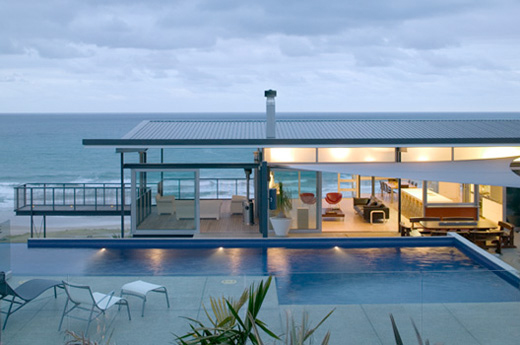Building a beach house is more than just constructing a home; it’s about creating a sanctuary that harmonizes with the coastal environment and fulfills your vision of seaside living. The allure of a beach house lies in its ability to offer both a retreat from the bustle of everyday life and a connection to the natural beauty of the ocean. To achieve this, a well-thought-out beach house plan is essential. This guide explores key considerations and unique features that can elevate your beach house from a mere structure to an idyllic seaside haven.

Understanding the Essentials of Beach House Plans
Beach house plans differ significantly from traditional home designs. The coastal environment presents unique challenges and opportunities, which should be reflected in the architectural blueprint.
Embracing the Coastal Climate
Beach houses must be designed to withstand the elements. The salty air, strong winds, and occasional storms characteristic of coastal regions demand materials and construction techniques that offer durability and resilience. When choosing materials, consider corrosion-resistant options such as stainless steel, concrete, and treated wood. Additionally, incorporating elevated foundations can protect your home from potential flooding and ensure compliance with local building codes.
Maximizing Views and Natural Light
One of the most compelling aspects of a beach house is the view. Your beach house plan should prioritize maximizing ocean vistas and natural light. Large, strategically placed windows, glass doors, and open floor plans can create a seamless connection between the interior spaces and the breathtaking surroundings. Consider orientation during the planning stage to ensure that living areas, bedrooms, and outdoor spaces capture the best views and sunlight throughout the day.
Key Architectural Features for Beach Houses
When designing a beach house, certain architectural elements can enhance both the aesthetic appeal and functionality of your coastal home.
Open-Concept Living Spaces
Open-concept living spaces are a hallmark of modern beach house design. This layout not only fosters a sense of spaciousness but also encourages airflow, which is particularly important in warm coastal climates. By minimizing interior walls, you can create a fluid transition between the kitchen, dining, and living areas, making the space feel larger and more inviting. This design also facilitates social interaction, making it ideal for entertaining guests or enjoying family time.
Expansive Outdoor Living Areas
Outdoor living is integral to the beach house experience. Incorporating expansive decks, patios, and balconies into your beach house plan allows you to fully embrace the outdoor lifestyle. These spaces serve as extensions of your indoor living areas, providing the perfect setting for al fresco dining, lounging, or simply soaking in the ocean breeze. Consider adding features like pergolas for shade, outdoor kitchens, or even an infinity pool to elevate your outdoor living experience.
Sustainable Design Considerations
Sustainability is an important factor in modern beach house design. Incorporating eco-friendly practices not only reduces the environmental impact of your home but can also enhance its comfort and efficiency.
Energy Efficiency
Energy efficiency is particularly important in coastal environments, where temperatures can vary significantly between seasons. Incorporating features such as high-performance windows, adequate insulation, and energy-efficient appliances can reduce energy consumption and lower utility costs. Additionally, consider installing solar panels to harness the abundant sunlight and further minimize your carbon footprint.
Water Management
Water management is another critical aspect of sustainable beach house design. Rainwater harvesting systems can be integrated into the roof design, allowing you to collect and reuse water for landscaping or non-potable household needs. Permeable paving materials can also be used in driveways and walkways to reduce runoff and promote groundwater recharge. These measures not only conserve resources but also help protect the surrounding ecosystem.
Personalizing Your Beach House Plan
While structural integrity and sustainability are paramount, personalizing your beach house plan ensures that it reflects your lifestyle and aesthetic preferences.
Interior Design Elements
The interior design of your beach house should evoke a sense of tranquility and connection to the coastal environment. Opt for a color palette inspired by the sea, with soft blues, sandy neutrals, and crisp whites. Natural materials such as wood, stone, and rattan can add warmth and texture to the space. Consider incorporating large, comfortable furnishings that invite relaxation, and don’t forget to include ample storage solutions for beach gear and other essentials.
Tailored Amenities
Your beach house should cater to your specific needs and desires. Whether you envision a home office with an ocean view, a cozy reading nook, or a luxurious master suite with a private terrace, tailoring the amenities to your lifestyle is key. Additionally, think about incorporating features that will enhance your enjoyment of the coastal location, such as an outdoor shower, a boat dock, or even a beachfront fire pit for evenings under the stars.
Conclusion: Crafting the Perfect Coastal Retreat
Designing a beach house is a unique and rewarding endeavor that combines the art of architecture with the beauty of nature. By carefully considering the essential elements of beach house plans—such as durability, view maximization, and sustainability—while also infusing your personal style and preferences, you can create a coastal retreat that not only stands the test of time but also provides a sanctuary of comfort and serenity. Whether you’re building a vacation home or a permanent residence, a thoughtfully designed beach house will allow you to fully embrace the joys of seaside living.